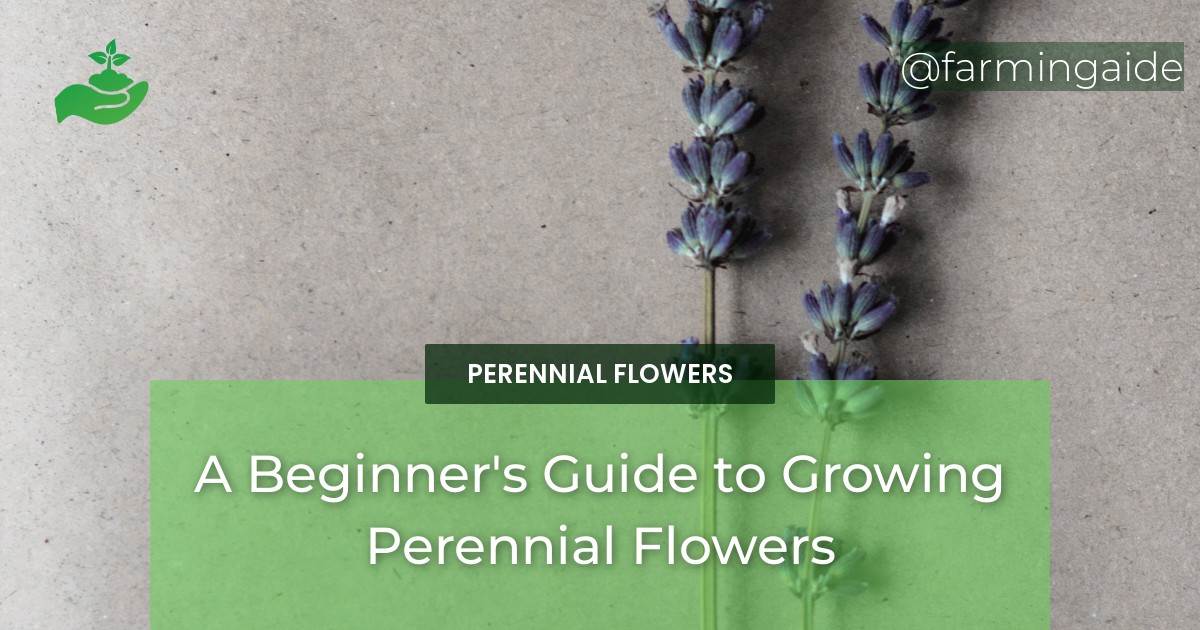If you are looking to add some color and beauty to your garden, perennial flowers are a great option. Unlike annual plants that require replanting every year, perennials grow back every year, making them a cost-effective and sustainable choice. However, growing perennial flowers can be intimidating, especially if you are new to gardening. This beginner’s guide will provide you with all the information you need to get started on growing your own perennial flowers.
Choosing the Right Perennial Flowers
Factors to Consider When Choosing Perennial Flowers
Before choosing the perennial flowers that you want to grow, there are a few factors that you should take into consideration. These include:
- Climate and Hardiness
- Light Requirements
- Soil Type
- Maintenance and Care
By taking these factors into account, you can select flowers that will thrive in your garden and that you will enjoy caring for.
Popular Perennial Flower Options for Beginners
If you are not sure where to start, there are many popular perennial flowers that are easy to grow and maintain. Some of these include:
- Black-eyed Susan
- Coneflower
- Daylily
- Hosta
- Peony
- Salvia
These flowers are hardy, low-maintenance, and will add a pop of color to your garden.
Preparing the Soil for Perennial Flowers
Soil Requirements for Perennial Flowers
Before planting perennial flowers, it is important to ensure that your soil is prepared and suitable for their growth. Perennial flowers require well-draining soil that is rich in organic matter. Soil that is too heavy or too sandy will not provide the necessary conditions for healthy growth.
Steps for Preparing Soil for Planting Perennial Flowers
The following are steps to prepare your soil for planting perennial flowers:
- Remove any weeds or debris from the planting area.
- Loosen the soil to a depth of at least 12 inches.
- Add organic matter, such as compost or aged manure, to the soil.
- Work the organic matter into the soil to a depth of at least 6 inches.
- Level the soil and water it thoroughly before planting.
ALSO READ
Planting Perennial Flowers
When to Plant Perennial Flowers
The best time to plant perennial flowers is in the early spring or fall, when the weather is cooler and there is more moisture in the soil. This will give the plants time to establish roots before the hot summer weather arrives.
Steps for Planting Perennial Flowers
The following are steps for planting perennial flowers:
- Dig a hole that is slightly larger than the plant’s root ball.
- Remove the plant from its container and loosen the root ball.
- Place the plant in the hole and backfill with soil.
- Water the plant thoroughly after planting.
Watering and Fertilizing Perennial Flowers
Watering Requirements for Perennial Flowers
Perennial flowers require regular watering, especially during the hot summer months. The key is to water deeply and infrequently, rather than giving the plants a light watering every day. This will encourage the roots to grow deep into the soil, where they can access moisture and nutrients.
Fertilizing Requirements for Perennial Flowers
Fertilizing your perennial flowers will help to ensure that they have the necessary nutrients for healthy growth and blooming. The best time to fertilize is in the early spring, before new growth appears. Use a balanced fertilizer that is high in phosphorus, which will promote blooming.
ALSO READ
Maintaining Perennial Flowers
Pruning Perennial Flowers
Pruning your perennial flowers will help to keep them looking tidy and neat, while also promoting healthy growth and blooming. The best time to prune depends on the type of flower, but generally, you should prune after the plant has finished blooming for the season.
Protecting Perennial Flowers from Pests and Disease
Keeping your perennial flowers healthy and pest-free requires regular maintenance and care. Some common pests and diseases that can affect perennial flowers include aphids, spider mites, and powdery mildew. The best way to prevent these problems is to keep your plants healthy by watering and fertilizing them properly, and by removing any dead or diseased foliage promptly.
Dividing and Transplanting Perennial Flowers
Why and When to Divide Perennial Flowers
Dividing your perennial flowers is a great way to increase their numbers and keep them healthy. Over time, perennials can become overcrowded, which can lead to reduced blooming and poorer health. Dividing the plants will help to rejuvenate them and promote healthy growth.
Steps for Transplanting Perennial Flowers
The following are steps for dividing and transplanting your perennial flowers:
- Dig up the entire plant, including the root ball.
- Separate the plant into sections, ensuring that each section has its own roots and foliage.
- Replant the sections in a new location or container.
- Water the plants thoroughly after transplanting.
Conclusion
Perennial flowers are a great addition to any garden, providing color, beauty, and sustainability. By following the tips and techniques outlined in this beginner’s guide, you can grow your own beautiful perennial flowers and enjoy them year after year.


